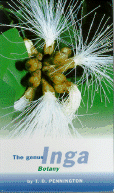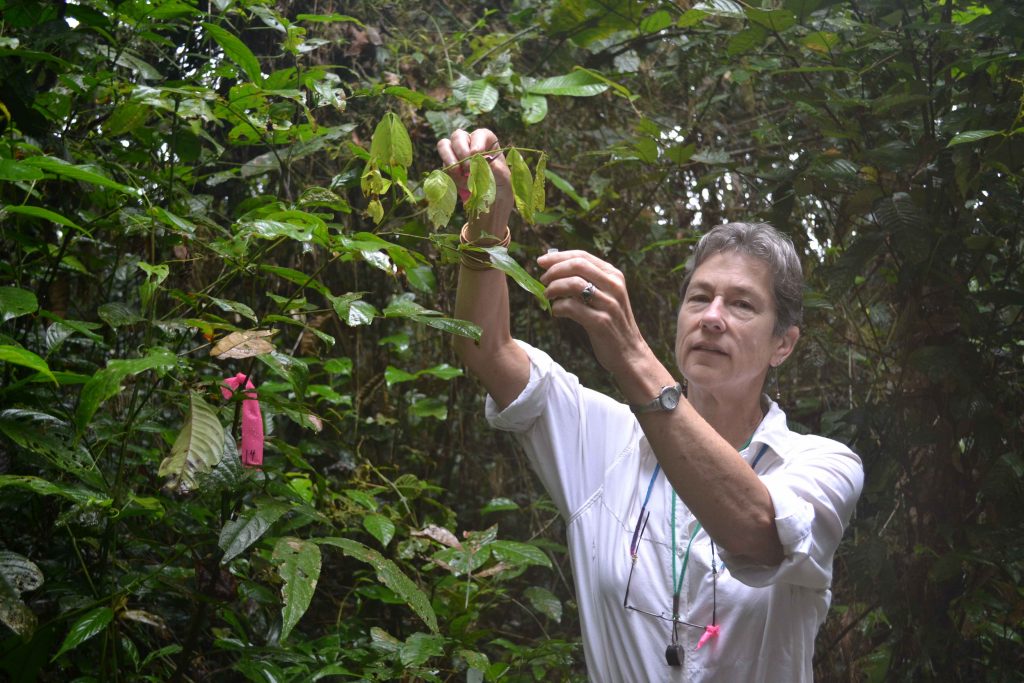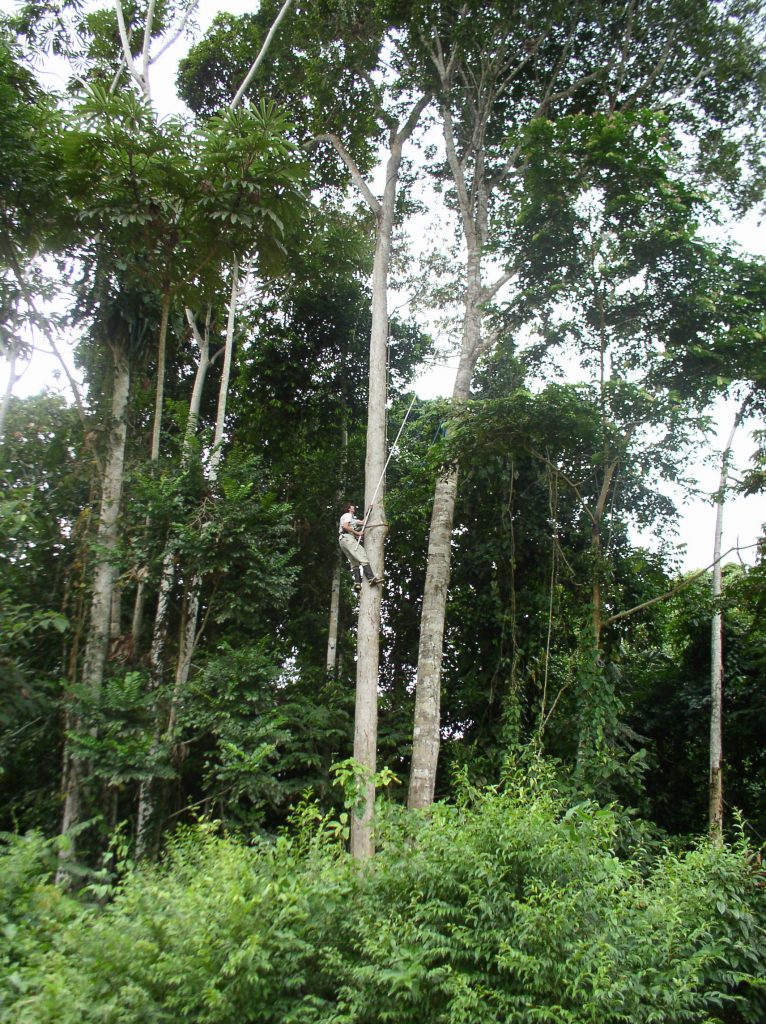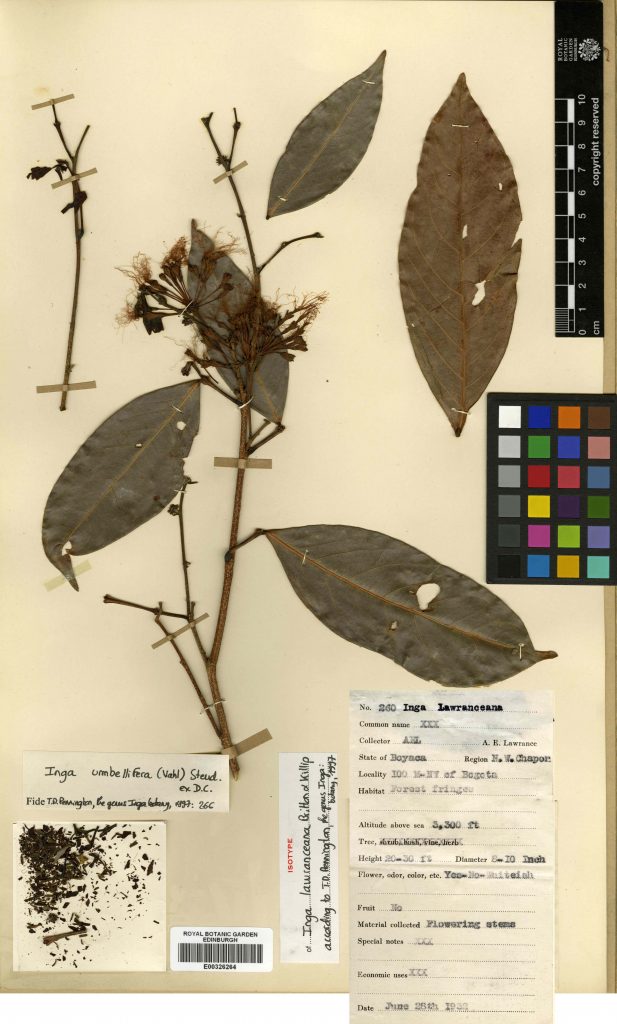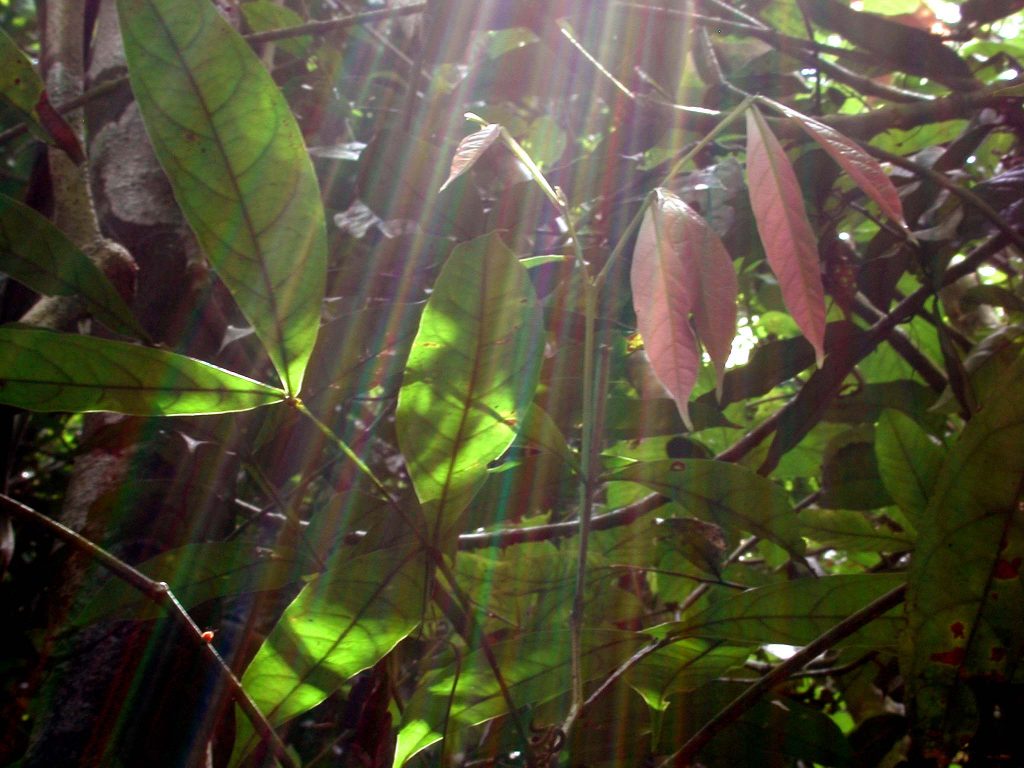About 300 species of Inga (Leguminosae: Mimosoideae: Ingeae) grow in lowland and montane rain forest throughout the humid tropical zone, from Mexico to Uruguay. Most species diversity is in the Andean foothills of Peru, Ecuador, Colombia and southern Central America, where it occupies a variety of habitats up to 3000m. The genus was monographed in 1996 by RBG Kew‘s Terry Pennington, providing a robust starting point for molecular studies at, and below, the species level. However, obtaining a robust species phylogeny of the group has proved problematic. Phylogenies based on nuclear ITS and plastid trnL-F sequence data produced at RBGE in 2001 (Richardson et. al. Science) were based on only 106 and 16 potentially informative characters respectively, and provided very little resolution for relationships between species of Inga. Even using six potential plastid DNA barcode markers, rpoC1, rpoB, rbcL, matK, trnH-psbA and psbK-psbI (Hollingsworth et al. 2009; a seventh tested locus, atpF-atpH, only amplified in 32% of the samples), we were unable to resolve species relationships in the genus. Partially overlapping with the set of plastid DNA regions used at RBGE, Kursar et al. (2009) also sequenced six plastid DNA regions, rpoC1, trnH-psbA, trnL-F, trnD-T, rps16 and ndhF-rpl32, again without obtaining a well-resolved phylogeny for Inga. Likewise for Kyle Dexter (Dexter et al. 2010), using a combination of nuclear ITS and plastid trnD-trnT sequence data.
One reason relationships within Inga may be difficult to reconstruct using DNA sequence data is that all the species are thought to have arisen in the last 2-10 million years, which means that they are considered ‘recent’ in evolutionary terms (Richardson et. al. Science, Lavin 2006). This leaves little time for molecular changes between DNA sequences to build up, making it difficult to work out how the plants are related to one another.
Because Inga is important economically, forms a significant part of tropical biomass and biodiversity, and plays many ecological roles, including containing a wide armoury of antiherbivore chemicals (Kursar et al. 2009), RBGE and colleagues (including Graham Stone and Kyle Dexter at the University of Edinburgh, and Thomas Kusar and Phyllis Coley at the University of Utah) are continuing to research the genus, with ongoing projects aiming to generate enough DNA information to finally generate a well-resolved phylogeny for the group.
Transcriptome datasets have been generated for three species of Inga, and these were used to identify regions of DNA that are variable between the sampled species. These identified DNA regions were then used to generate a set of 276 target regions for which a MYbaits library was designed (Nicholls et al. submitted). This has now been successfully tested using DNA extracted from 45 silica-dried Inga collections (Nicholls et al. submitted).
One of the species used to generate the transcriptomes, and for which 19 individuals have been sampled by Nicholls et al. using the MYbaits protocol, is Inga umbellifera; widespread across Amazonia it is well represented in the collections at RBGE, both as herbarium sheets and silica-dried plant tissue for DNA extraction. Because of its availability and because we already have data available for comparisions, we chose this species to test the utility of next generation sequencing of hybrid baits on DNA extractions from herbarium specimens, dating from 2009 back to 1835.
James A. Nicholls, R. Toby Pennington, Erik J.M. Koenen, Colin E. Hughes, Jack Hearn, Lynsey Bunnefeld, Kyle G. Dexter, Graham N. Stone & Catherine A. Kidner. 2015. Using targeted enrichment of nuclear genes to increase phylogenetic resolution in the neotropical rain forest genus Inga (Leguminosae: Mimosoideae). Frontiers in Plant Science 6: 710. doi: 10.3389/fpls.2015.00710
Capturing Genes from Herbaria. I. What it’s all about. http://stories.rbge.org.uk/archives/16411
Capturing Genes from Herbaria. II. Inga. http://stories.rbge.org.uk/archives/16427
Capturing Genes from Herbaria. III. The samples. http://stories.rbge.org.uk/archives/16441
Capturing Genes from Herbaria. IV. DNA. http://stories.rbge.org.uk/archives/16470
Capturing Genes from Herbaria. V. Fragmenting the DNA. http://stories.rbge.org.uk/archives/16525
Capturing Genes from Herbaria. VI. Size Selection. http://stories.rbge.org.uk/archives/16645
Capturing Genes from Herbaria. VII. Comparisons. http://stories.rbge.org.uk/archives/16737
Capturing Genes from Herbaria. VIII. Amplification. http://stories.rbge.org.uk/archives/16788
Capturing Genes from Herbaria. IX. Hybrid capture. http://stories.rbge.org.uk/archives/17298
Capturing Genes from Herbaria. X. An update. http://stories.rbge.org.uk/archives/20751
Capturing Genes from Herbaria. XI. Some metagenomics of a herbarium specimen. http://stories.rbge.org.uk/archives/20817

